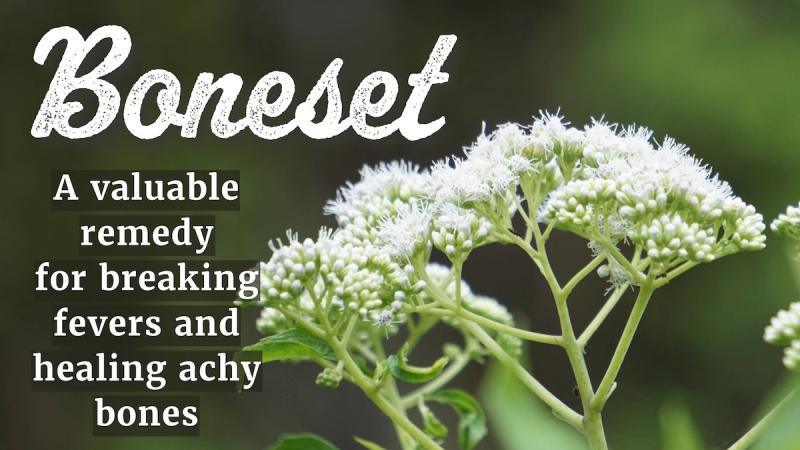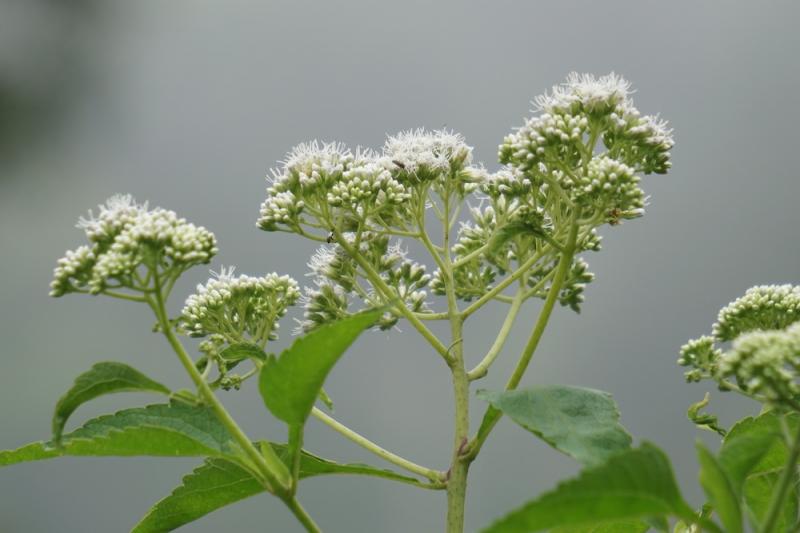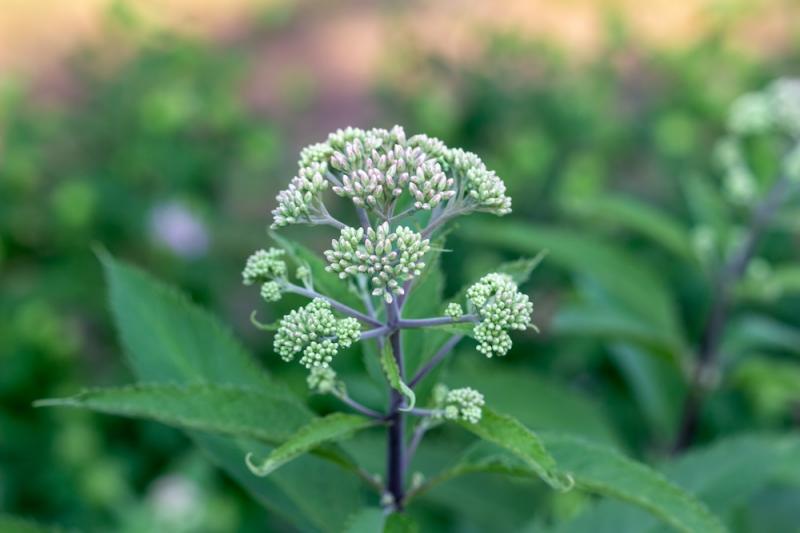
While boneset, Eupatorium purpureum, is related to gravel root (Eupatorium purpureum, E. fistulosum, or E. maculatum) it has different uses. The primary use I’ve made of boneset is for treating the flu. It’s a good remedy for influenza where you get deep aches in the muscles and bones. It’s also good for flu accompanied by fever and chills.
I remember how I felt the first time I tried boneset. After taking it I felt a touch of nausea and a sensation of relaxing muscles, not unlike what I have felt when taking lobelia. However, the effect is milder. So, I’ve come to use boneset as a milder alternative to lobelia in some herb formulas I’ve made for colds, flu, and fever, such as the Herbal Crisis formula.
Boneset is diaphoretic, so it will help induce perspiration to break a fever. It also appears to have some antiviral activity. Although, I'm not sure whether this is a direct antiviral effect or acting indirectly by boosting the immune system, it can help with other viral infections, including colds, measles, and mumps. It may also help with diseases with fever and chills like scarlet fever and Rocky Mountain spotted fever.
Boneset and the Skeletal System
 In many herb books, the name boneset, is associated with boneset’s ability to treat fever with achy bones, i.e., “bone break fever,” and not with its ability to heal broken bones. But Matthew Wood says that it can help draw the bone back into place and he has had many very positive experiences in using it to help heal broken bones. Although I personally haven't used it for that purpose.
In many herb books, the name boneset, is associated with boneset’s ability to treat fever with achy bones, i.e., “bone break fever,” and not with its ability to heal broken bones. But Matthew Wood says that it can help draw the bone back into place and he has had many very positive experiences in using it to help heal broken bones. Although I personally haven't used it for that purpose.
Boneset has also been used for other structural problems, such as arthritis and osteoporosis. It appears to help recalcify bones. A local herbalist named Joseph VanSeters (who had a company called Grandma’s Herbs) told the story of a man with arthritis who contracted the Asian flu. He was in terrible pain and the doctor couldn’t do anything. Someone suggested boneset tea, which he drank copiously, sweated profusely, and felt a whole lot better. According to Mr. VanSeters, “Strangely enough, after that, his arthritis seemed to be a lot better.”
Using Boneset
 Traditionally, boneset was used as an infusion and taken hot. When used in this manner, it promotes perspiration in a manner similar to yarrow. Because boneset is bitter, it isn't pleasant to drink, but you can flavor it with peppermint and other ingredients that are better tasting to make it more palatable. It’s available in tincture form, which is easier to take. Just follow it with some room temperature or warm water. You can also find it in an ingredient in immune formulas that target colds and flu.
Traditionally, boneset was used as an infusion and taken hot. When used in this manner, it promotes perspiration in a manner similar to yarrow. Because boneset is bitter, it isn't pleasant to drink, but you can flavor it with peppermint and other ingredients that are better tasting to make it more palatable. It’s available in tincture form, which is easier to take. Just follow it with some room temperature or warm water. You can also find it in an ingredient in immune formulas that target colds and flu.
Steven's Articles
September
-

-
Horseradish
A pungent spice for aiding protein metabolism…
-

-
Banaba or Crepe Myrtle
A beautiful tree from Southeast Asia whose leaves…
August
-

-
Monkeyflowers
Flower essences to help see ourselves more clearly…
-

-
Mariposa Lilies
Strengthening the bond between mother and child…
-

-
The Noble Bay Leaf
A common kitchen herb for aiding digestion and…
-

-
Epimedium: Horny Goat Weed
A circulatory stimulant and kidney yang tonic…
July
-

-
The Medicinal and Nutritional Benefits of Apricots
A nutritious fruit and valuable medicinal seed for coughs
-

-
Dogwoods
Asian dogwood is used to stop excessive discharge,…
June
-

-
Neem: The Village Pharmacy
A popular Ayurvedic remedy for dental and immune…
-

-
Spilanthes: The Toothache Plant
A traditional remedy for teeth and gums, as well…
-

-
Forsythia
An anti-inflammatory, fever-reducing, and infection fighting herb
May
-

-
Buckwheat (Kashi)
A delicious, high protein, gluten-free, gut-healthy food
-

-
Leaky Gut Syndrome
Plugging the leaks on the underlying cause of…
-

-
Storksbill
An edible, medicinal, weedy herb, helpful for…
April
-

-
Millet
Low glycemic, gluten-free, hypoallergenic grains…

